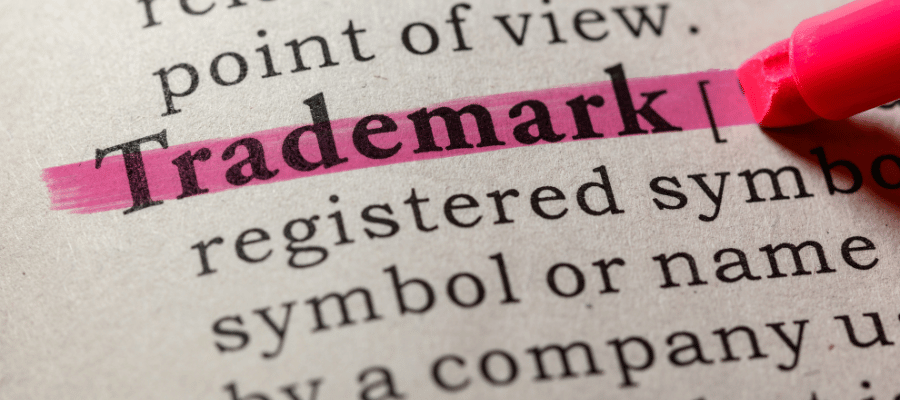Understanding WIPO’s 2024 Nice Classification Changes:
Impact on the USPTO’s §6.1 of 37 CFR Part 6 and Class 3
The United States Patent and Trademark Office (USPTO) recently announced a final rule that will bring significant changes to trademarks that will take effect on January 1, 2024.
This rule specifically amends § 6.1 of 37 CFR Part 6, aligning it with the 12th edition, version 2024, of the Nice Classification published by the World Intellectual Property Organization (WIPO). These updates will have implications for trademark holders in various classes, with a special emphasis on Class 3.

Table of Contents
- The WIPO Nice Classification and the Committee of Experts
- What is § 6.1 of 37 CFR Part 6?
- What is Class 3?
- Subcategories within Class 3
- Notable Amendment: Removal of “Scouring”
- Implications for Trademark Holders
- Benefits of Aligning with International Standards
- Preparing for the Effective Date
- Key Takeaways & Sources
WIPO Nice Classification and the Committee of Experts
The Nice Classification is administered by the World Intellectual Property Organization (WIPO) and serves as the international system for classifying goods and services for trademark registration. The Committee of Experts of the Nice Union meets annually to vote on proposed changes. These changes are published electronically and include additions, deletions, and wording modifications of goods and services classifications.
As a signatory to the Nice Agreement, the U.S. adopts these revisions, making it crucial for U.S. trademark holders to stay updated.
What is § 6.1 of 37 CFR Part 6?
37 CFR Part 6 is a specific section within the Code of Federal Regulations that governs the classification of goods and services for the purposes of registering trademarks under the U.S. Trademark Act. This section serves as the regulatory framework that aligns the U.S. classification system with international standards, specifically the Nice Classification administered by the World Intellectual Property Organization (WIPO).
The recent amendment to § 6.1 is particularly noteworthy. This subsection is responsible for detailing the “International schedule of classes of goods and services,” which is the U.S. adoption of the Nice Classification system. The amendment incorporates changes and modifications as listed in the 12th edition, version 2024, of the Nice Classification.
What is Class 3?
Class 3 in the Nice Classification is a comprehensive category that serves as a catch-all for a wide range of goods related to personal care, beauty, and cleaning. This class is particularly important for businesses and brands operating in the cosmetics and cleaning industries, as it governs how such products are classified for trademark registration purposes.
Subcategories within Class 3
- Cosmetics: This subcategory includes makeup products like foundation, lipstick, and eyeshadow, as well as skincare items like moisturizers and serums.
- Perfumes and Fragrances: This encompasses perfumes, eau de toilettes, and other scent-based products designed for personal use.
- Essential Oils: These are concentrated oils that capture the aroma and properties of plants, used in both aromatherapy and as fragrance in other products.
- Hair Care Products: This includes shampoos, conditioners, hair dyes, and other treatments designed for hair care.
- Soaps and Cleansers: This covers various types of soaps, including hand soaps, bath soaps, and even detergents used for cleaning.
- Cleaning Preparations: This subcategory includes general cleaning agents like surface cleaners and disinfectants.
- Polishing Agents: Products used for polishing surfaces, including furniture and vehicles, fall under this subcategory.
- Abrasive Preparations: This includes sandpaper, scouring powders, and other materials used for grinding or polishing surfaces.
Notable Amendment: Removal of “Scouring”
One significant change in the recent amendment to § 6.1 of 37 CFR Part 6 is the removal of the term “scouring” from the class description of Class 3. Previously, “scouring” was listed alongside “cleaning, polishing, and abrasive preparations.” With this amendment, the term “scouring” will now be subsumed under “abrasive preparations.”
This streamlining of language is more than just a semantic change; it has practical implications for trademark holders in this class. Specifically, businesses with products previously categorized under “scouring” may need to review their trademark portfolios to ensure they still align with the updated classification.
Implications for Trademark Holders
- Broad Re-evaluation of Portfolio: Trademark holders in all affected classes should conduct a comprehensive review of their existing portfolios to ensure alignment with the revised international schedule under the amended 37 CFR Part 6.
- Specific Focus on Class 3: For Class 3, the removal of the term “scouring” and its inclusion under “abrasive preparations” may require a more detailed review to ensure that existing trademarks still fall under the appropriate subcategories.
- International Filings: The alignment with international standards simplifies the international filing process, particularly beneficial for those considering global expansion.
Benefits of Aligning with International Standards
- Streamlined Processes: The amendments bring U.S. classifications in line with international standards, simplifying international trademark registration.
- Enhanced Legal Certainty: A unified classification system provides a consistent legal framework, reducing risks associated with international disputes.
- Facilitation of International Trade: Standardized classifications ease the process of international trade, particularly beneficial for small and medium-sized enterprises.
Preparing for the Effective Date
- Consult Legal Counsel: Consult with experienced intellectual property attorneys to assess the specific implications and develop a tailored strategy.
- Update Documentation: Revise all relevant business and legal documentation to reflect the new classifications under the amended 37 CFR Part 6.
- Monitor USPTO Announcements: Stay updated with any further guidance or clarifications from the USPTO to ensure full preparedness for the changes.
Wondering how these changes could affect your business? The Founders Legal trademark team is well-versed in international trademark classifications and can help you prepare for the 2024 updates. Book your free consultation with one of our experienced attorneys today!

Key Takeaways & sources
- Effective Date: January 1, 2024
- Comprehensive Update: The amendment to § 6.1 is not minor; it’s a sweeping change affecting multiple classes. It includes additions, deletions, and modifications to the Alphabetical List, class headings, and explanatory notes.
- Class 3 Focus: The amendments especially impact Class 3, covering personal care, beauty, and cleaning products. The term “scouring” has been removed and is now included under “abrasive preparations.”
- Portfolio Re-evaluation: Trademark holders should conduct a comprehensive review of their existing portfolios to ensure they align with the revised international schedule.
- Renewal and Maintenance: Those with upcoming renewals may need to submit additional documentation or amendments to comply with the new regulations.
- Legal Scrutiny: The USPTO may increase scrutiny, potentially leading to opposition or cancellation proceedings.
- International Filings: The alignment with international standards simplifies the international filing process, beneficial for those considering global expansion.
- Preparation: Consult intellectual property attorneys and monitor USPTO updates for readiness.
Sources & More Information:
- Federal Register: International Trademark Classification Changes
- USPTO: USPTO will incorporate updates to the Nice Classification in 2024
- WIPO: Nice Classification
Questions about how these changes will affect your trademark portfolio?
Founders Legal’s Intellectual Property Practice Group is dedicated to helping businesses navigate the intricate world of trademark law, especially in light of the upcoming changes to international and U.S. trademark classifications.
With a deep understanding of the recent amendments to § 6.1 of 37 CFR Part 6 and the Nice Classification, our experienced trademark team is well-equipped to guide you through these significant updates. To ensure you are prepared for the 2024 changes, schedule a free consultation with us today. Our responsive team is here to help.
- Are Memes Dangerous? Meme Culture Meets Copyright Law: A Guide For Businesses & Creators - November 28, 2023
- 2024 Changes to International Trademark Classifications - September 13, 2023
- Jenka Lab’s Intellectual Property Rights at Forefront of Counterfeit Games Lawsuit - August 25, 2023
Intellectual Property & Trademark GROUP







Firm Administrator


Administrative Assistant
